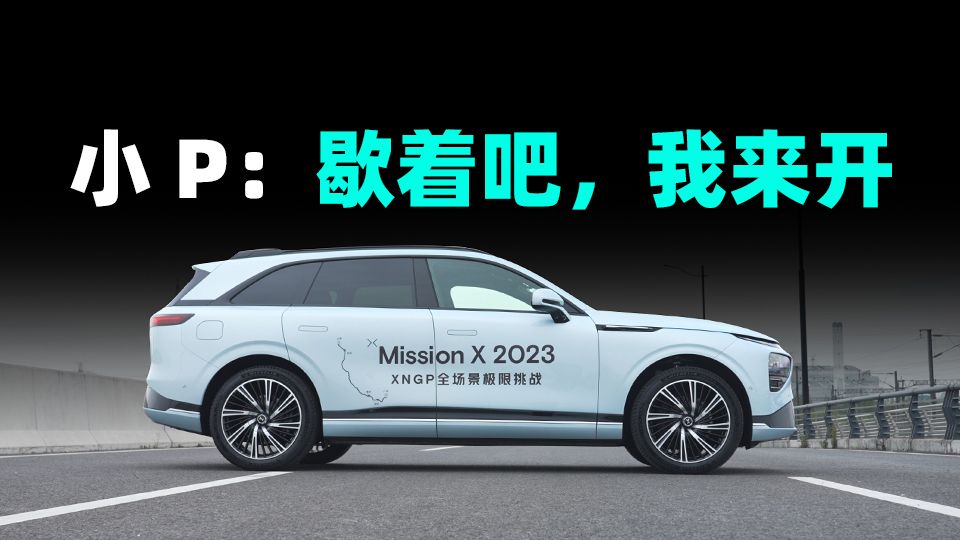Not long ago, we drove a Xiaopeng G9 from Guangzhou to Shenzhen and finally arrived in Shanghai after three days, covering a distance of approximately 1,800 km.
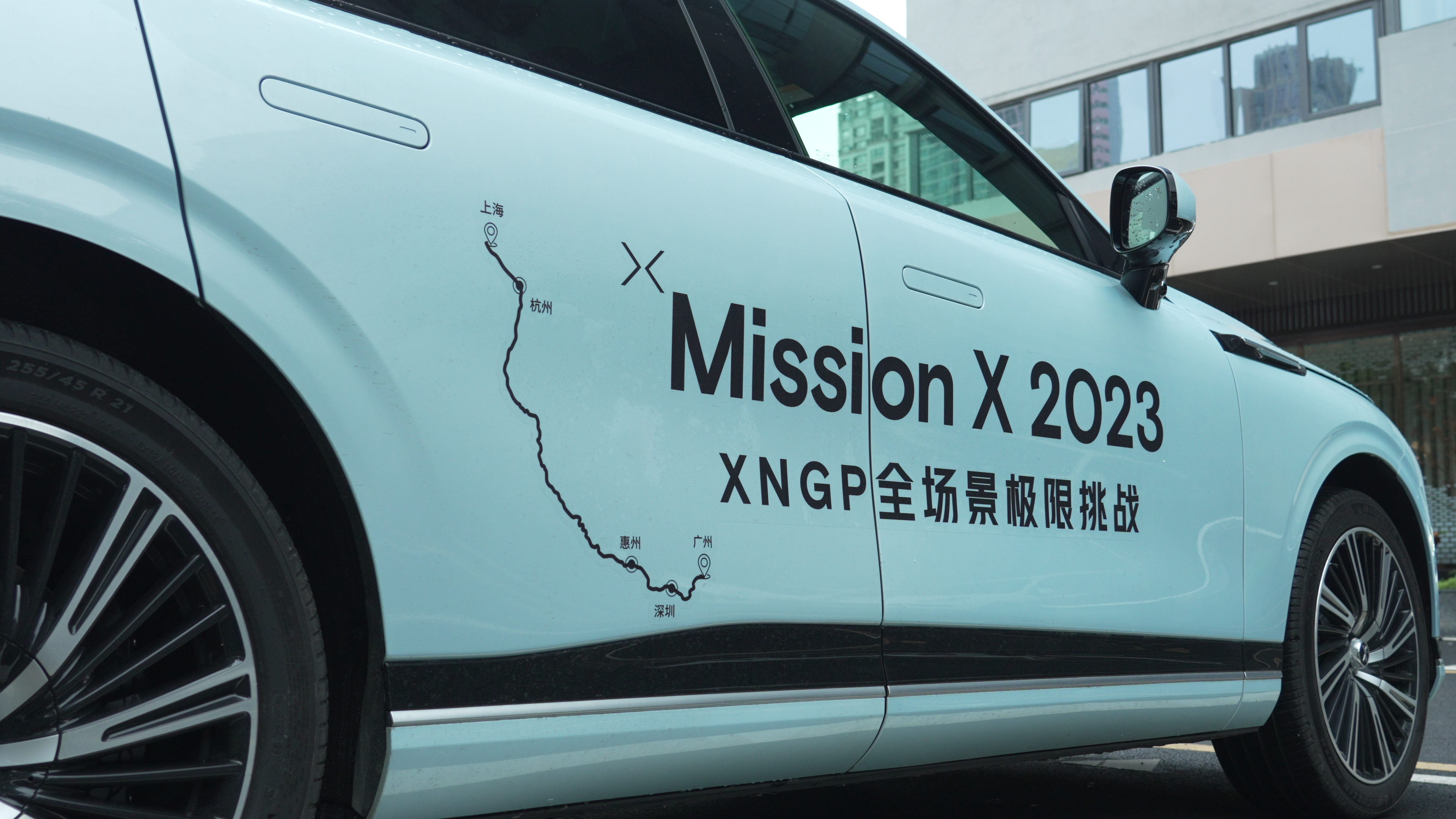
In fact, I am not a big fan of long-distance driving because I have always had two impressions of it: it’s tiring to drive on the highway and it’s tiring to drive outside of my hometown.
The first impression comes from the fact that I always feel tired driving on the highway at 120 km/h, as I have to keep the car in my lane at all times while constantly paying attention to the road ahead to ensure the safety of my vehicle. All of these tasks combined make me feel exhausted. If something unexpected happens, such as an object in front of me or a sudden lane change or braking by the car in front, I always feel startled.
The second impression comes from my previous experiences traveling outside of my hometown. I always feel that people don’t follow the traffic rules in many places. As a driver who has only driven in Shanghai, where the driving environment is relatively good, driving outside of my hometown makes me feel like a beginner.
However, after driving for 1,800 km during this long-distance trip, I have gained a brand new understanding of these two impressions. I even want to take a road trip during the upcoming May Day holiday, even though I have never driven outside of Shanghai before. Why did I change my mind? What happened on the road? Let’s talk about it below.
How did XNGP cure my fear of driving on the highway?
First, let’s briefly introduce what XNGP is. XNGP is Xiaopeng’s second-generation advanced driving assistance system—full-scenario driving assistance. What is the full-scenario? Xiaopeng provides the following four scenarios:
- High-precision map covered sections on the highway by high-speed NGP
- High-precision map covered sections in the city by City NGP
- No high-precision map coverage sections in the city by Enhanced Lane Keeping System-Lane Centering Control
- Parking lot scenarios supported by Vehicle Parking Assistant
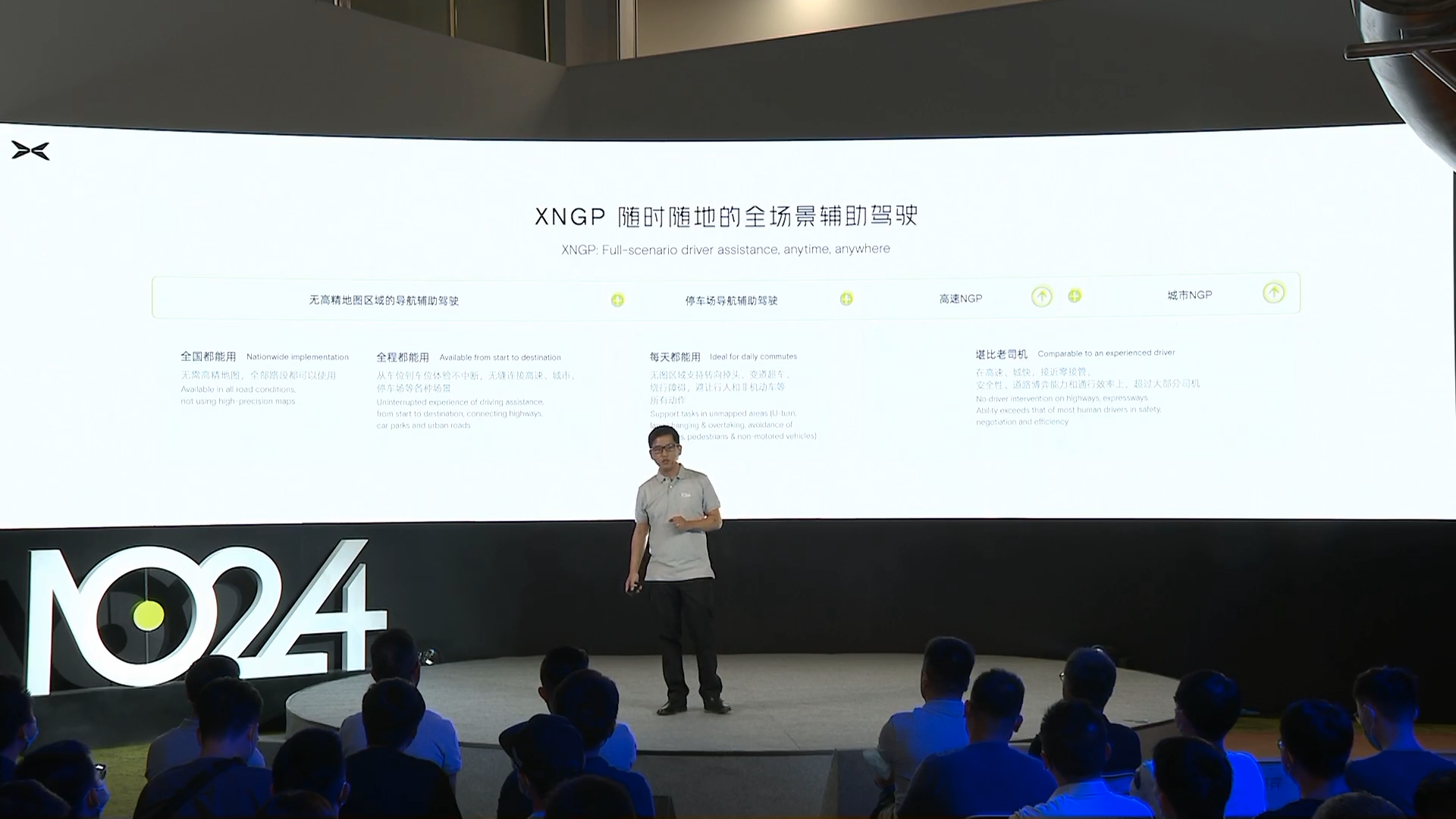
From these four scenarios, we can see that Xiaopeng has covered most of the scenarios in our daily driving with XNGP. This also explains why XNGP cured my fear of driving on the highway—because, for most of the time on the highway, I don’t need to drive myself.As we said in the video, we recently drove from Guangzhou to Yingtan, passing through Shenzhen and Huizhou on the highway with relatively low traffic, and there was no need to take over the control at any time.
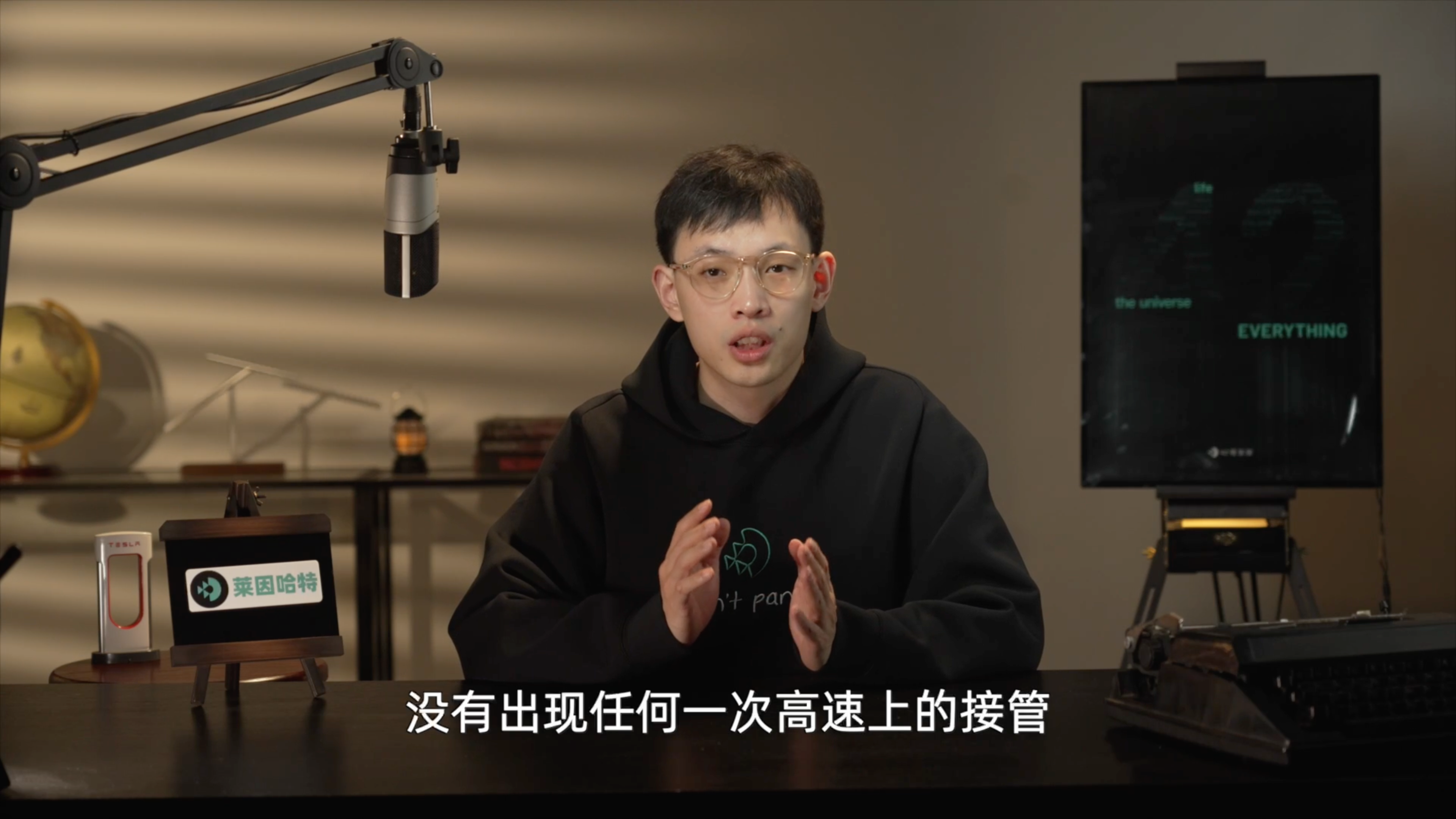
In my opinion, the takeovers during assisted driving can be roughly divided into two categories — takeovers in dangerous situations, and takeovers due to low efficiency. With the development of assisted driving capabilities, the number of takeovers in dangerous situations has been decreasing, but there are still many takeovers caused by low efficiency.
During our drive on the highway a few days ago, neither of these two types of takeovers occurred. Whether it was the avoidance when the preceding vehicle changed lanes, the timely lane change when the preceding vehicle was driving slowly, or the stability in the ramp scene, the safety and efficiency of vehicle passage was as good as that of a human driver. Therefore, there was no need for me to take over the control.
On the third day, there were several takeovers due to the increased traffic as we entered the Jiangsu, Zhejiang, and Shanghai regions. However, as you can see from the video, these takeovers were mainly caused by large vehicles suddenly cutting in front of us when they were approaching.
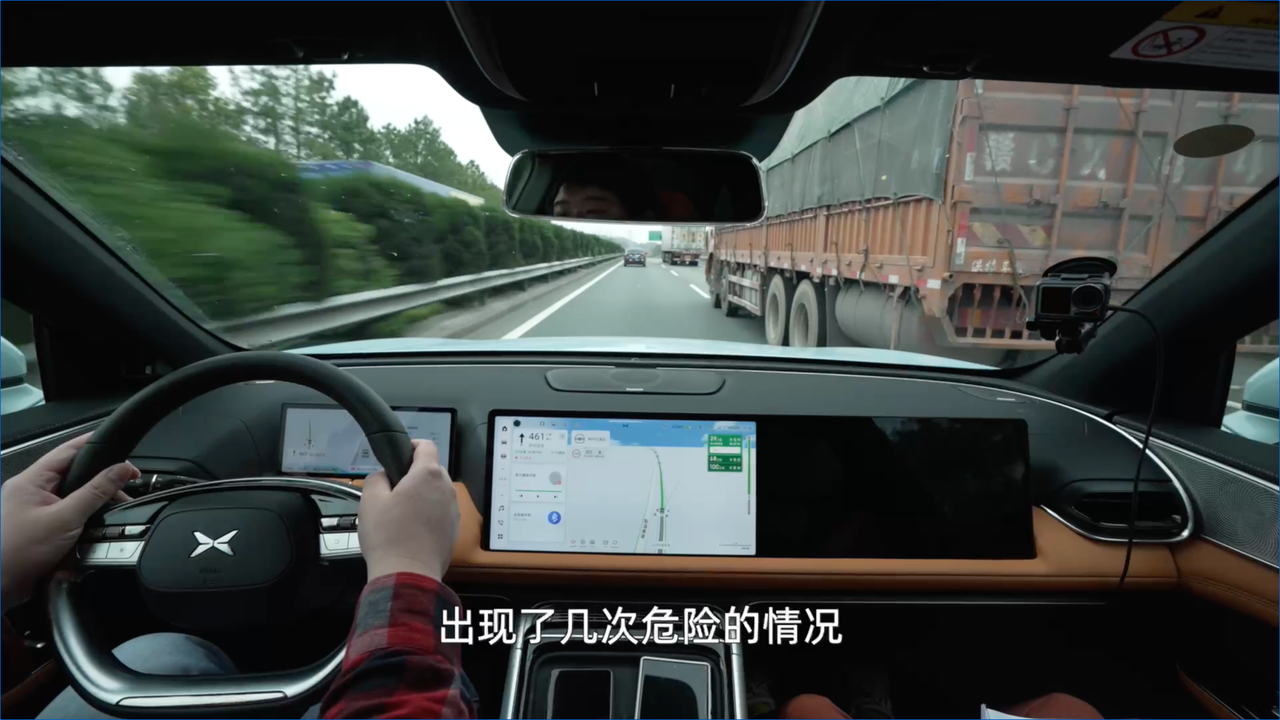
For both XNGP and human drivers, it is difficult to make a judgment in such a situation, which is currently beyond the scope of XNGP.
Overall, XNGP’s performance is already very close to that of human drivers on the highway. Ever since we entered the highway through the toll gate and turned on XNGP, it has become our habitual way of driving on the highway.
Recently, during a business trip to Suzhou, I chose to drive the company’s Xiaopeng G9 rather than taking the high-speed rail, even for a relatively short distance of a few dozen kilometers on the highway, because XNGP allowed me to sit in the seat, look straight ahead, and enjoy the seat massage to reach my destination.
Lastly, let’s talk about range anxiety and energy replenishment, which are still unavoidable for electric vehicles on the highway. This time we drove the Xiaopeng G9 650 Max version, which is the four-wheel drive and dual-motor version.With three people in the car and a trunk full of luggage, we have travelled at an average speed of over 110 km/h for three hours on the highway in heavy rain, and the fully charged battery can run for about 380–400 km. This range is reasonable because after running for about three hours straight, people need to rest and it is also a good time to charge the vehicle.
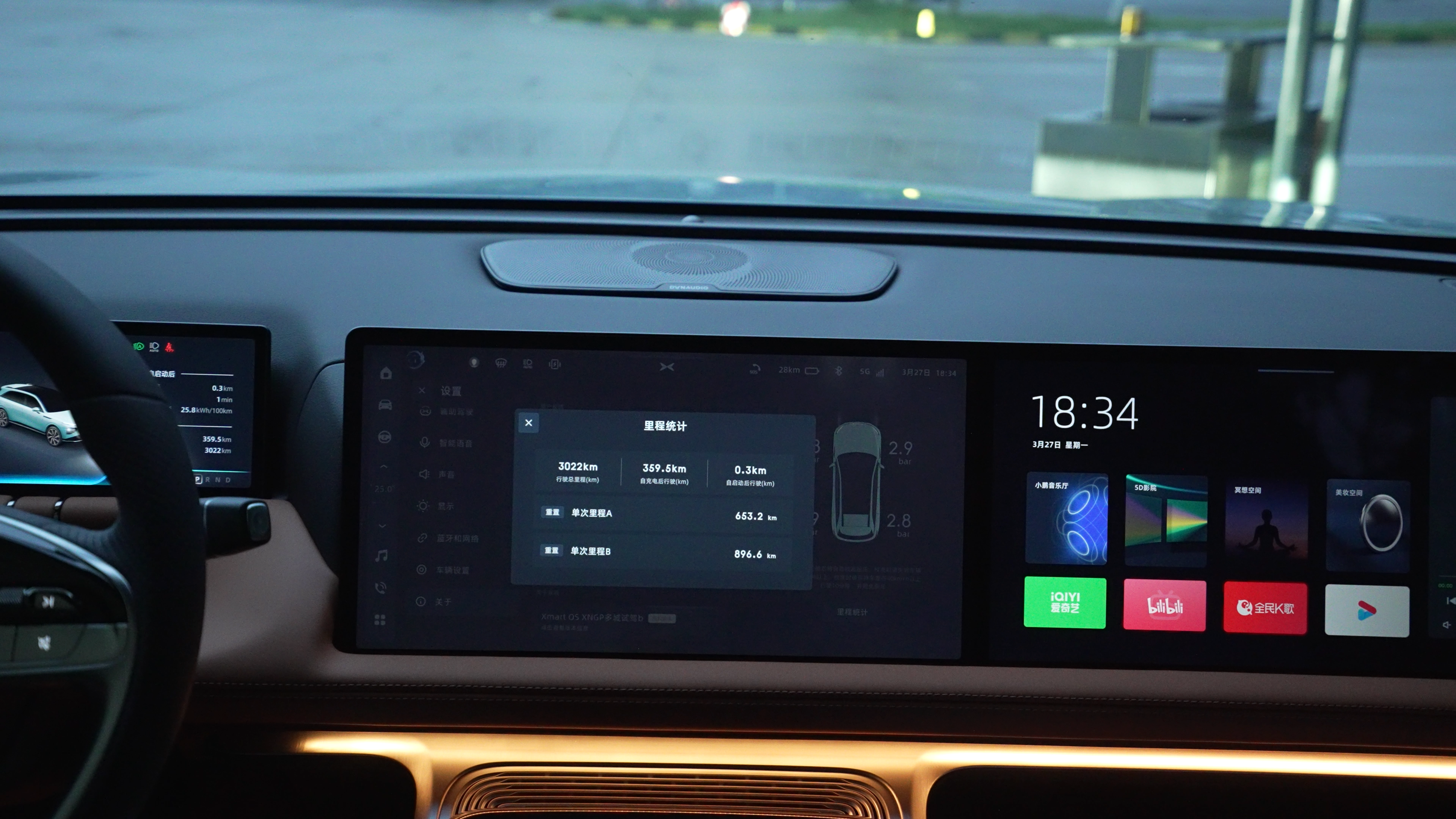
Benefiting from the 800 V platform and the newly installed high-power charging stations in the service area along the way, G9’s charging power can easily reach over 150 kW! What does it mean? We can charge the car in the service area, go to the bathroom and have a meal, and the APP will notify us that the battery is fully charged as soon as we finish eating. In other words, both the car and the passengers can be recharged at the same time.

With this range and the high-power fast charging, the G9 has no range anxiety on the highway during non-holiday peak periods.
The highway is resolved, what about the city?
Now that the highway issue has been resolved, the remaining scenario is urban traffic. Currently, Xpeng’s NGP city driving is only available in three cities: Guangzhou, Shenzhen and Shanghai, and XNGP’s city driving can be divided into two categories: NGP with high-precision maps and LCC-L without high-precision maps.
Most of the scenes in the video were filmed in Shanghai, so I will mainly focus on the performance of XNGP in Guangzhou, Shenzhen, and Huizhou.
In Guangzhou and Shenzhen, most road sections can enable city driving function with high-precision maps coverage. Once enabled, the vehicle does not require human intervention in most straight road scenes, and can recognize traffic lights without any problem as long as they can be seen by the cameras. When the front of the vehicle is blocked by a large vehicle, it can slow down and brake according to the status of the front vehicle.
Even the traffic lights that distinguish between lanes can be recognized and passed through smoothly.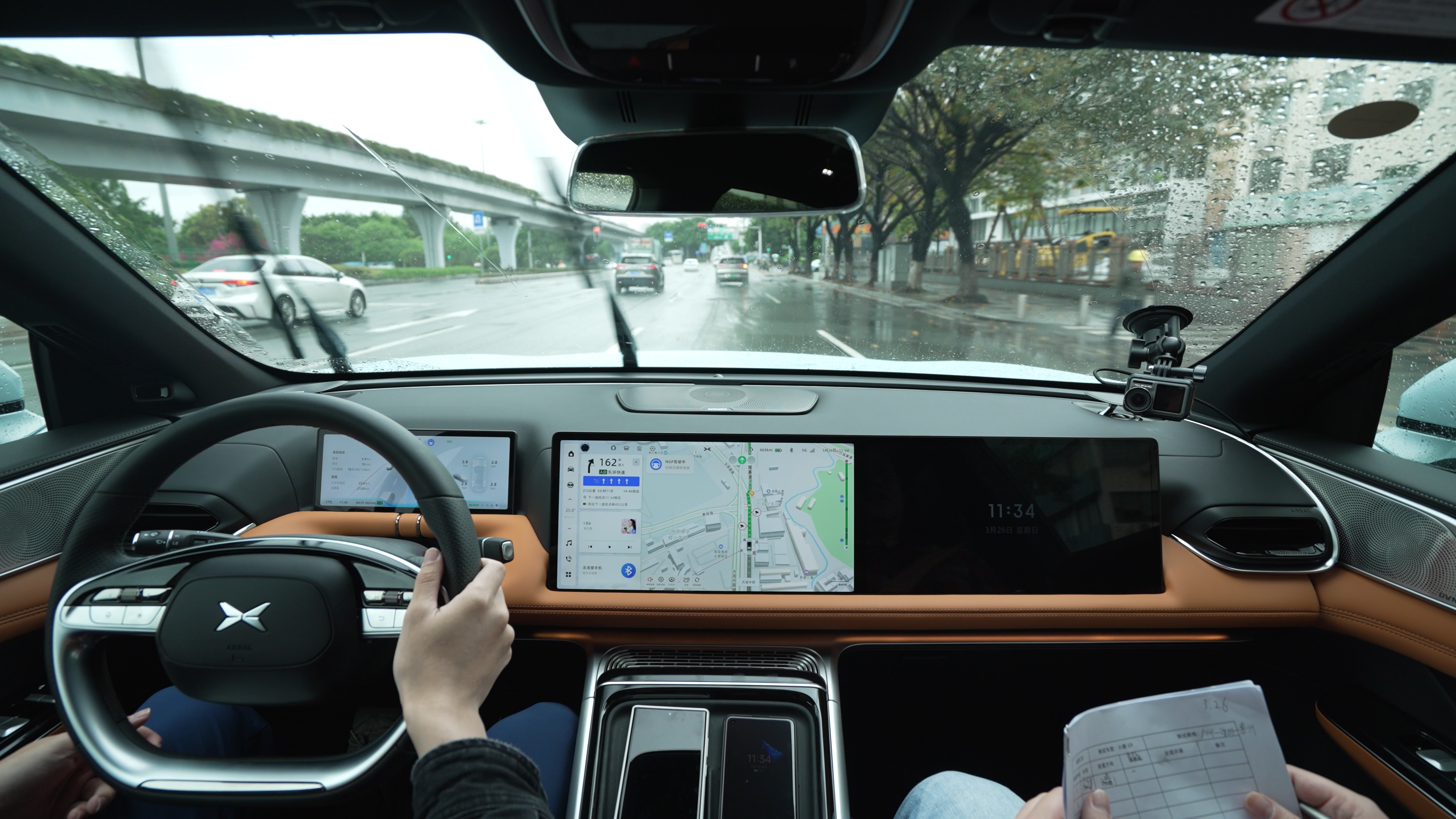
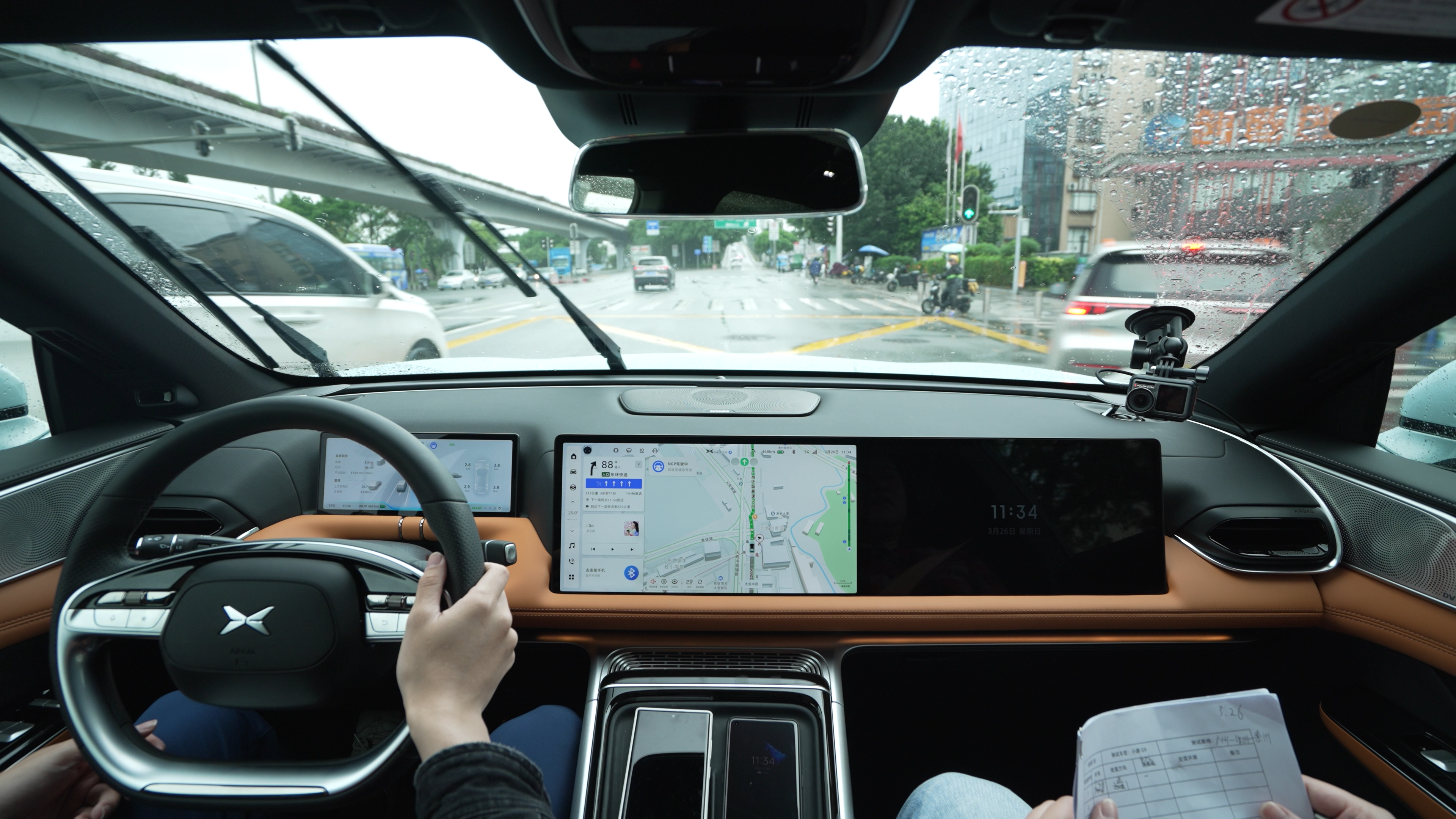
Even after passing through a long section without lane markings following the traffic lights, the vehicle was able to enter the ramp smoothly without much correction of the steering wheel.
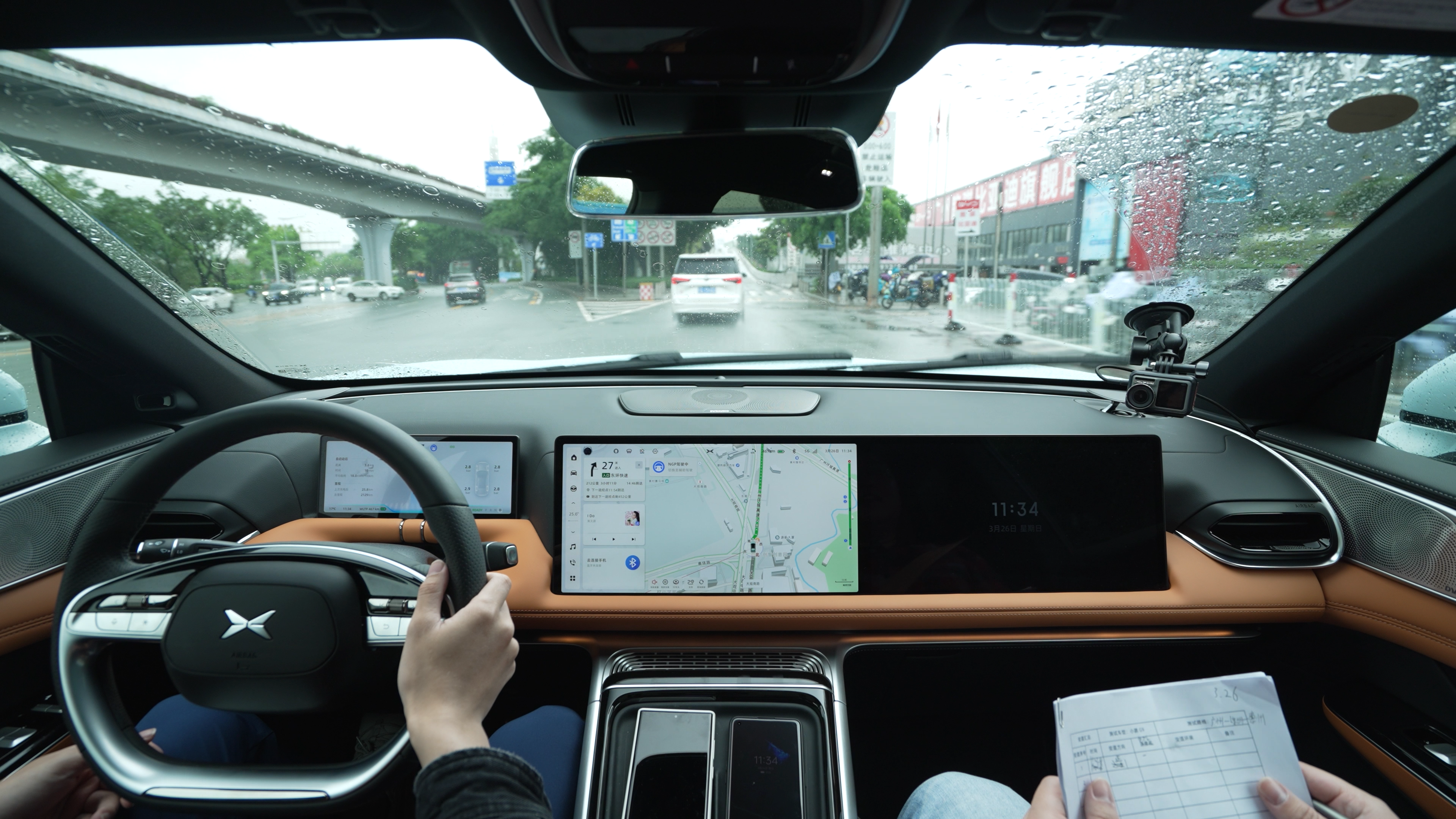
However, if faced with a red light that is turned off or a continuously flashing yellow light, the vehicle will slow down and hesitate until it is further identified before passing.
In terms of cornering ability, I have selected the following two scenarios to show you. Ahead is a turning loop with a speed limit of 20 km/h. Although the vehicle does not have the ability to turn at intersections, it can still pass through such turning loops steadily.

Even when turning, the vehicle’s maximum speed can exceed 20 km/h with no problem keeping up with the front vehicle.
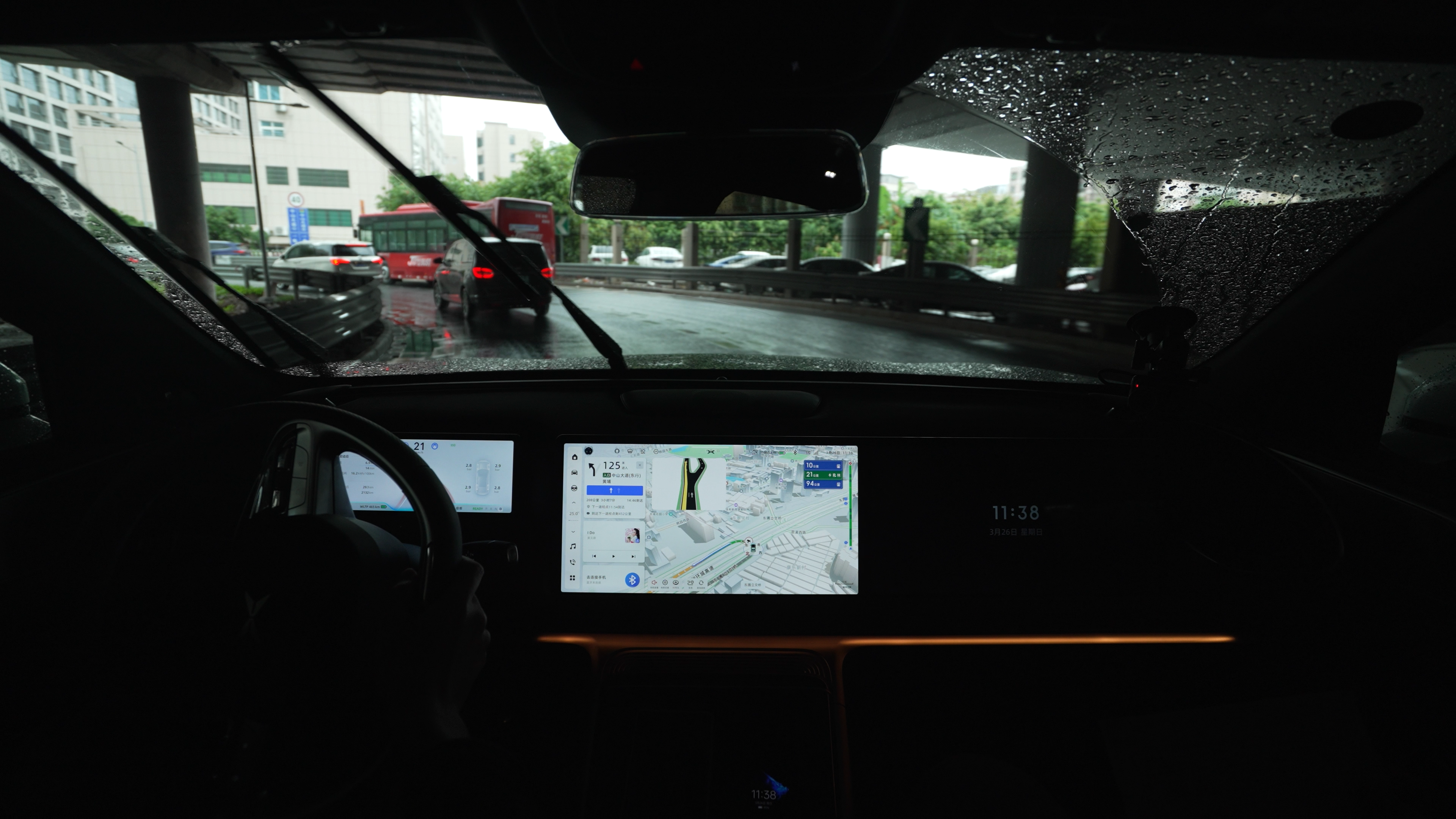
In the next scenario, XNGP directly surpassed a vehicle driven by a human driver. Such cornering ability, I believe, needs no further explanation.
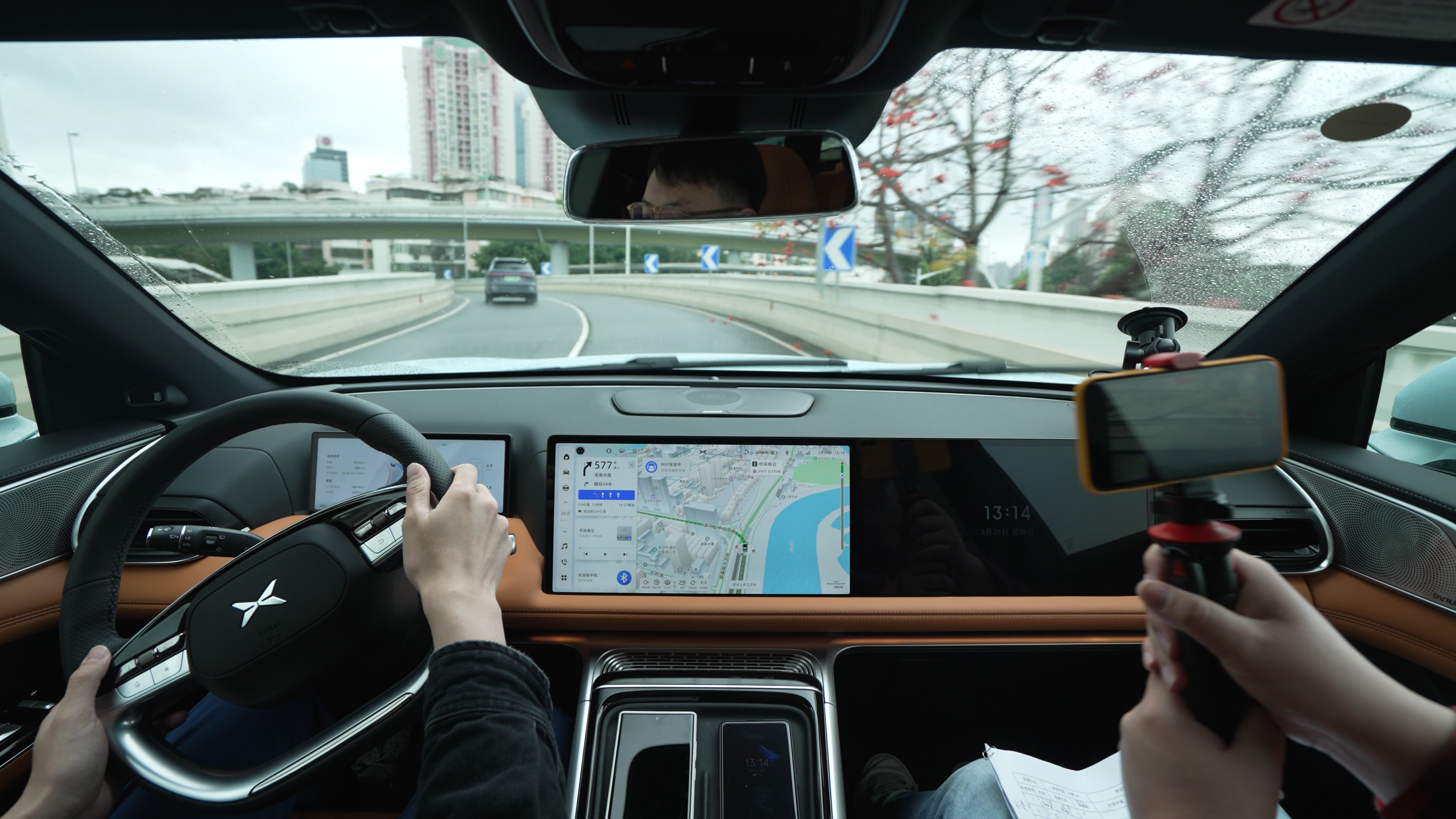

Now, in this scenario, the vehicle had just completed a right turn when several electric bikes blocked the path suddenly. The vehicle quickly changed lanes to the left to avoid them when it judged there were no vehicles behind it, demonstrating almost the same performance as a human driver.

Let’s talk about the LCC-L feature. Here are two scenarios to show you how it works. The first scenario is a complicated toll booth on the Guangzhou-Shenzhen Riverside Expressway with a section of road where the lane abruptly ends on the right. We turned on the LCC-L feature to see how it performs.
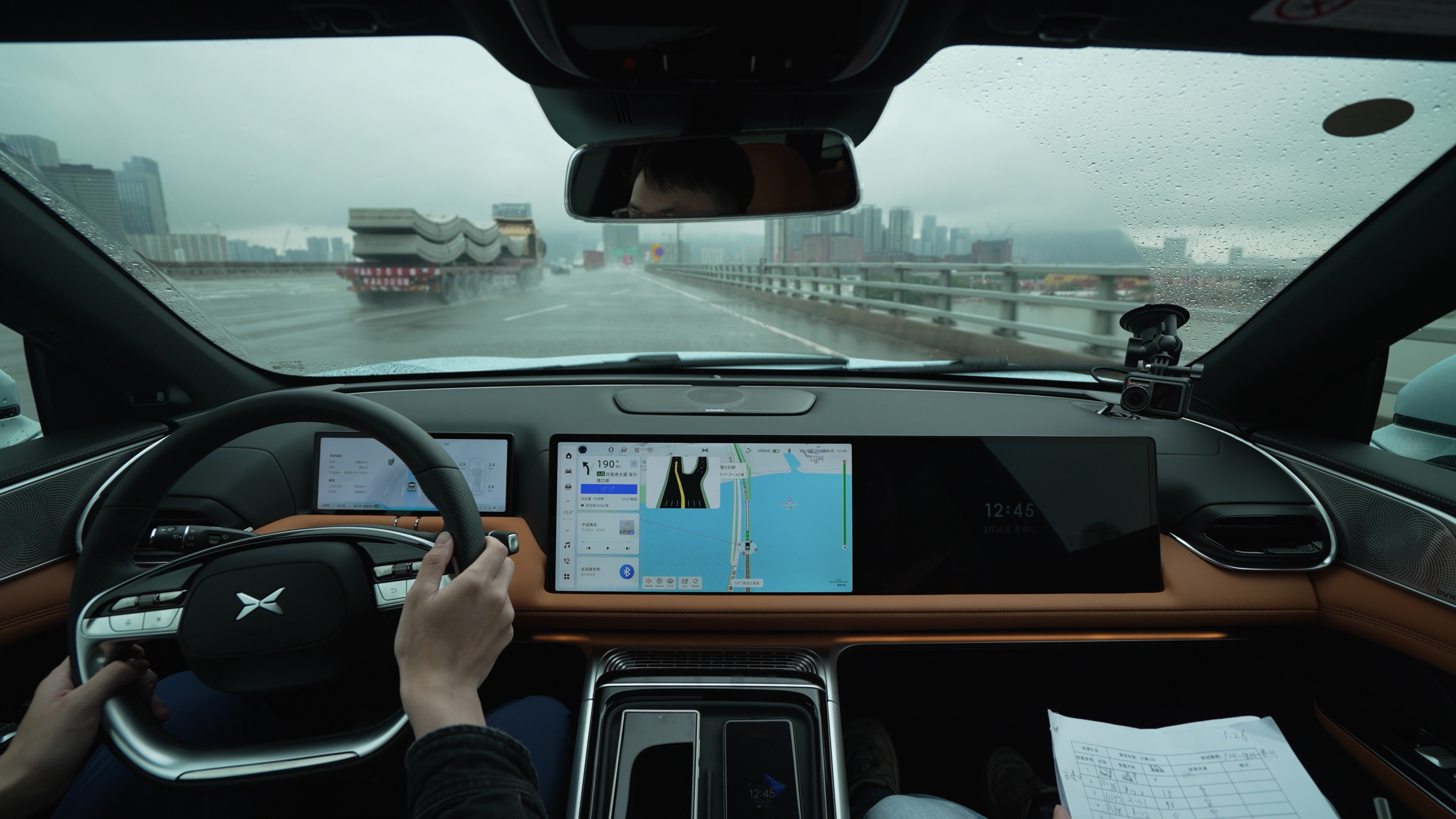
Although there were some confusions and warnings to take over, the vehicle managed to pass through the section, which demonstrates that the LCC-L feature can work as long as one side of the road has clear lane markings.
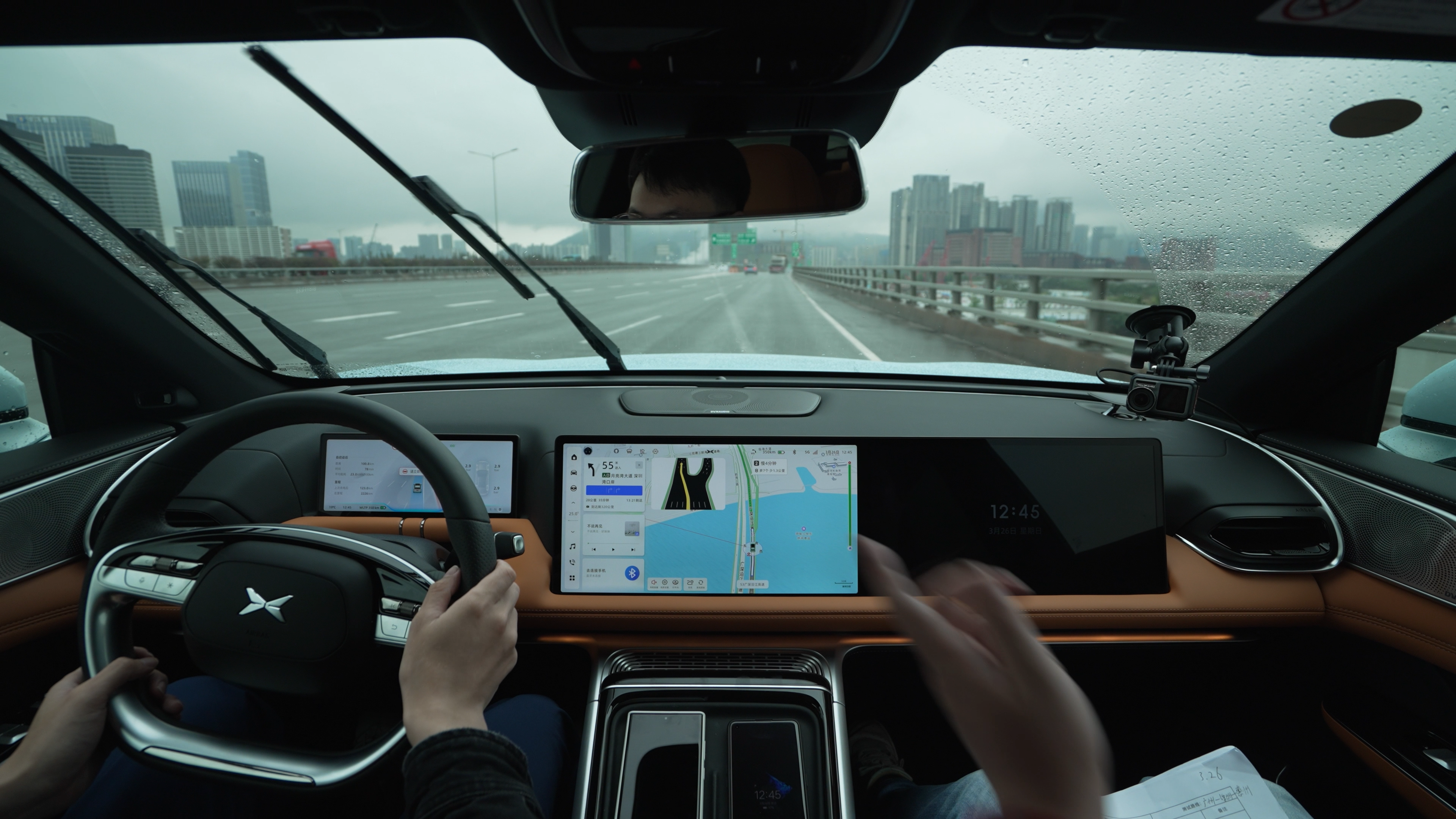
After we got off the expressway, we came across another section where large vehicles parked on both sides, and only the middle lane was available for passage. The first part was easy to pass because the lane markings were clear.
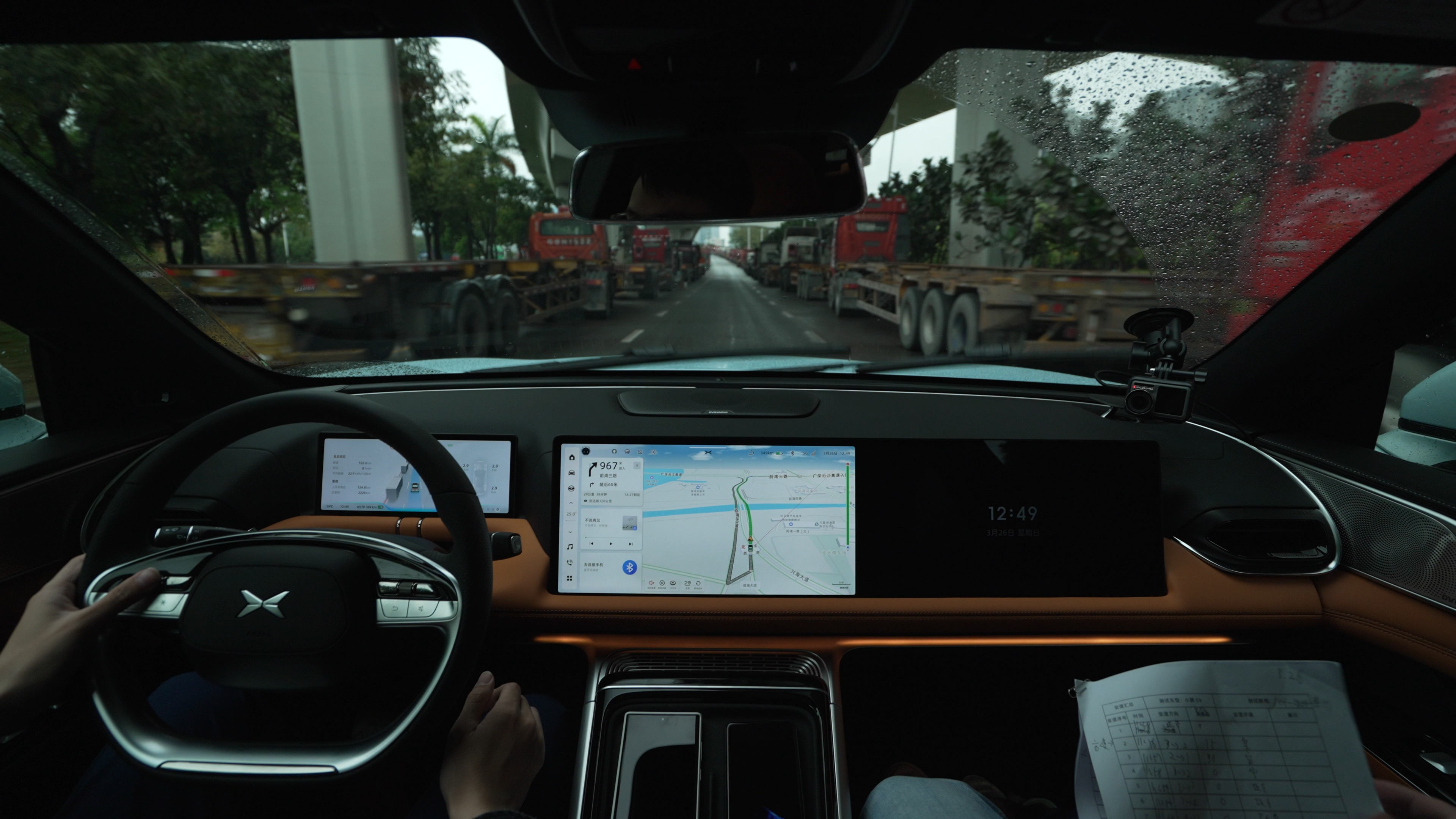
However, when we were about to leave, we encountered a section where the lane markings were barely visible. Despite that, the vehicle still managed to plan a feasible route visually and passed through smoothly.
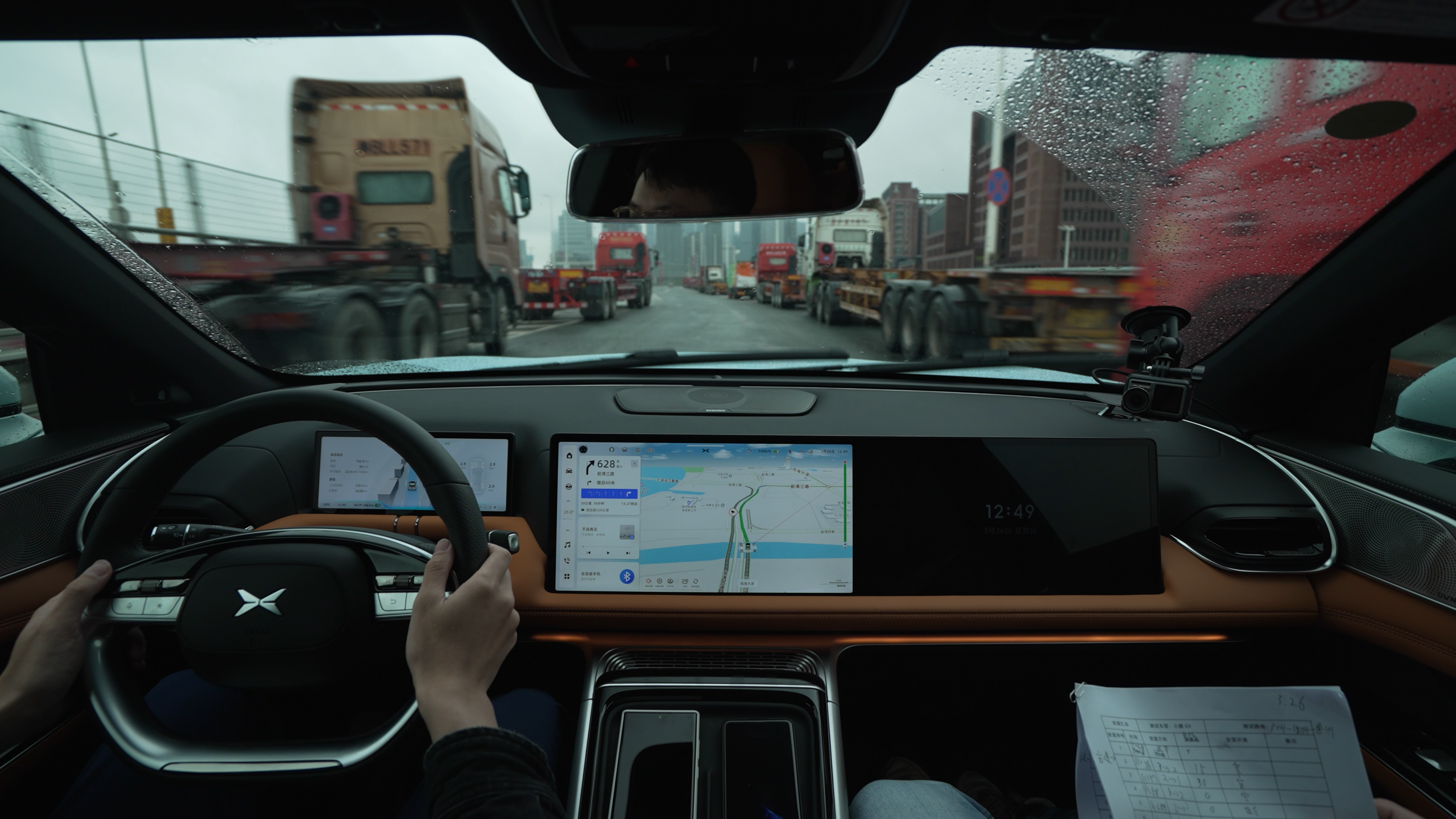
Overall, XNGP can handle most urban scenarios without any human intervention, but drivers still need to pay attention to road conditions when making turns through intersections. As for the LCC-L feature, it works well on straight roads, but the road selection and game strategy with other vehicles still need further optimization.
Finally, because we did not go through a more complex underground parking lot this time, we did not have the actual experience of the memory parking function. If you are interested, we can film another episode on our G9 for you.
When will XNGP truly achieve autonomous driving?
On the 2021 1024 Day, Wu Xinzhou, vice president of Xpeng’s autonomous driving department, proposed the concept of “the second half of intelligent driving“. At that time, Xpeng had just released the world’s first mass-produced vehicle equipped with laser radar, the Xpeng P5, which is currently the only model equipped with XPILOT 3.5 intelligent driving hardware.
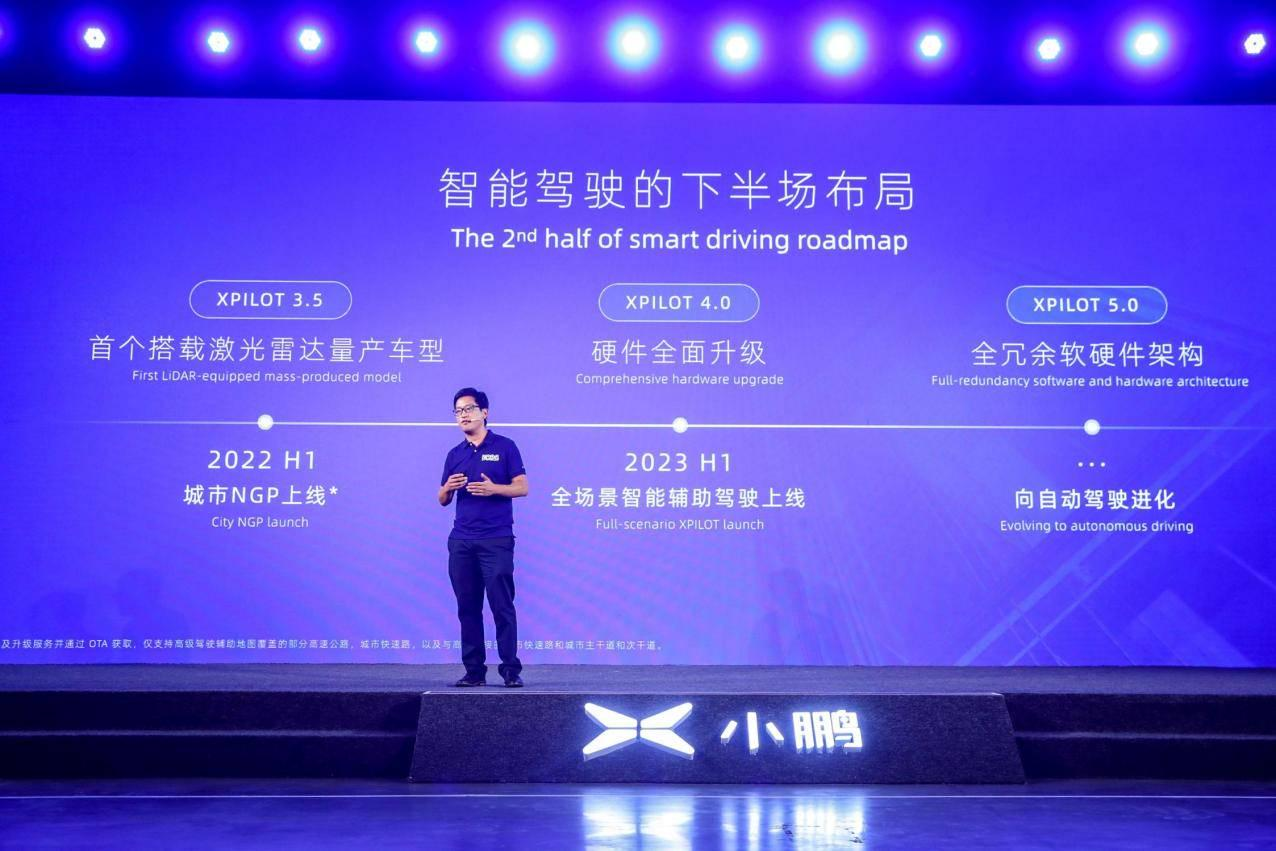
At that time, Xpeng’s planned route was:
- In the first half of 2022, NGP function will go online on the P5 in the cities;
- In the first half of 2023, XNGP full-scenario intelligent auxiliary driving function will go online on XPILOT 4.0 models, including Xpeng G9, P7i, and the upcoming G6;
- Move towards autonomous driving in XPILOT 5.0 models.
On the 2022 1024 Day, Wu Xinzhou provided a clearer plan:
- The first half of 2022 is the first half of intelligent driving, only single-scenario assisted driving;
- From 2023 to 2025, the second half of intelligent driving will begin, and Xpeng will evolve to XNGP full-scenario assisted driving during this period;
- After 2025, Xpeng will officially move towards comprehensive autonomous and unmanned driving.
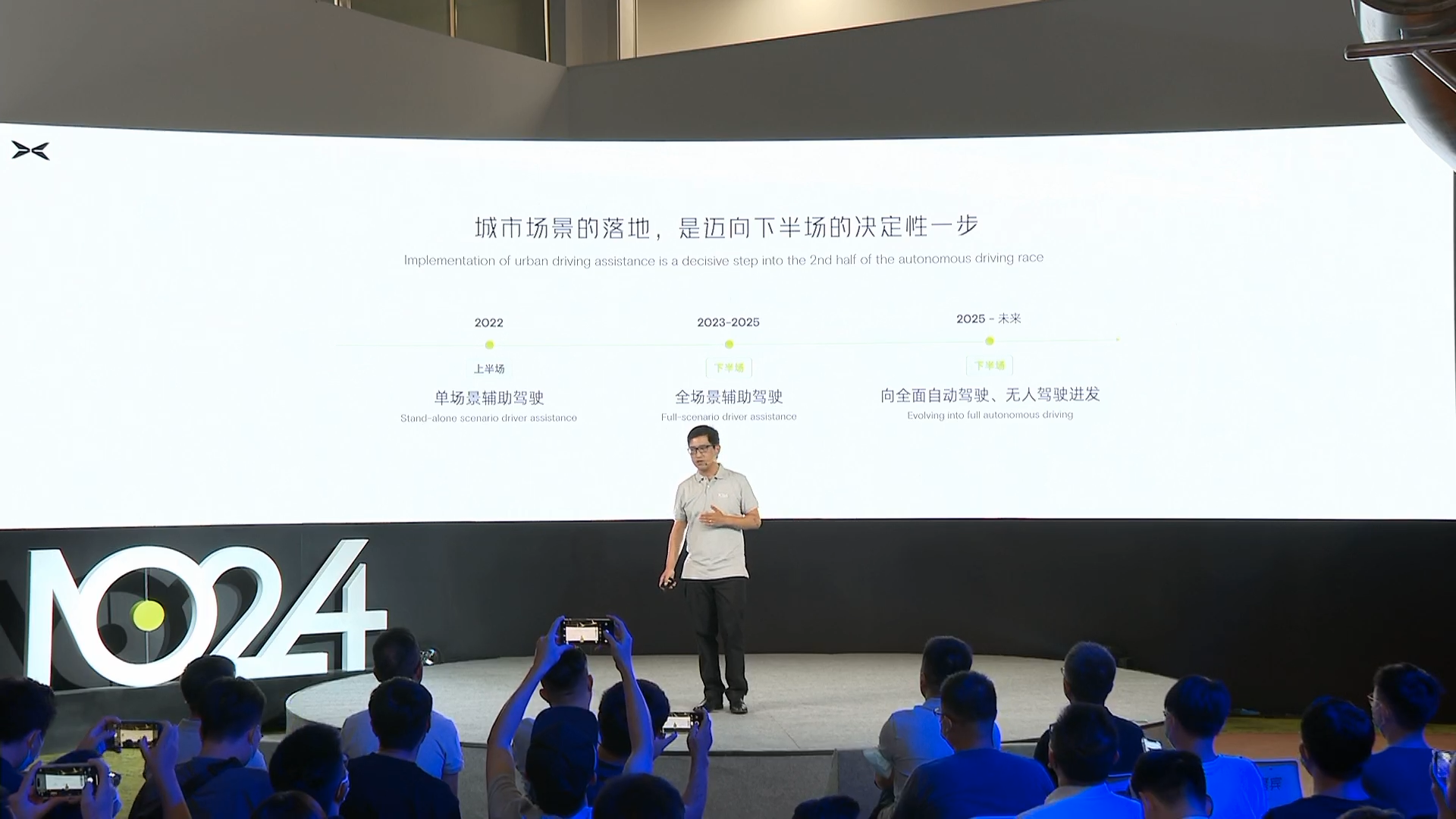
Judging from the current performance of 1,800 kilometers, Xpeng’s** performance on highways has become increasingly closer to its ultimate goal**. However, in urban scenarios, it is evident that Xpeng still needs to solve many complex scenarios.
At the Shanghai Auto Show, Xpeng finally unveiled its most heavyweight model of the year, the Xpeng G6. As another model equipped with XPILOT 4.0 hardware and an internal sales expectation that is very high, the significance of this model for Xpeng is not only a further exploration of sales, but more importantly, it will become another model that brings advanced intelligent driving down to a lower price point following P7i.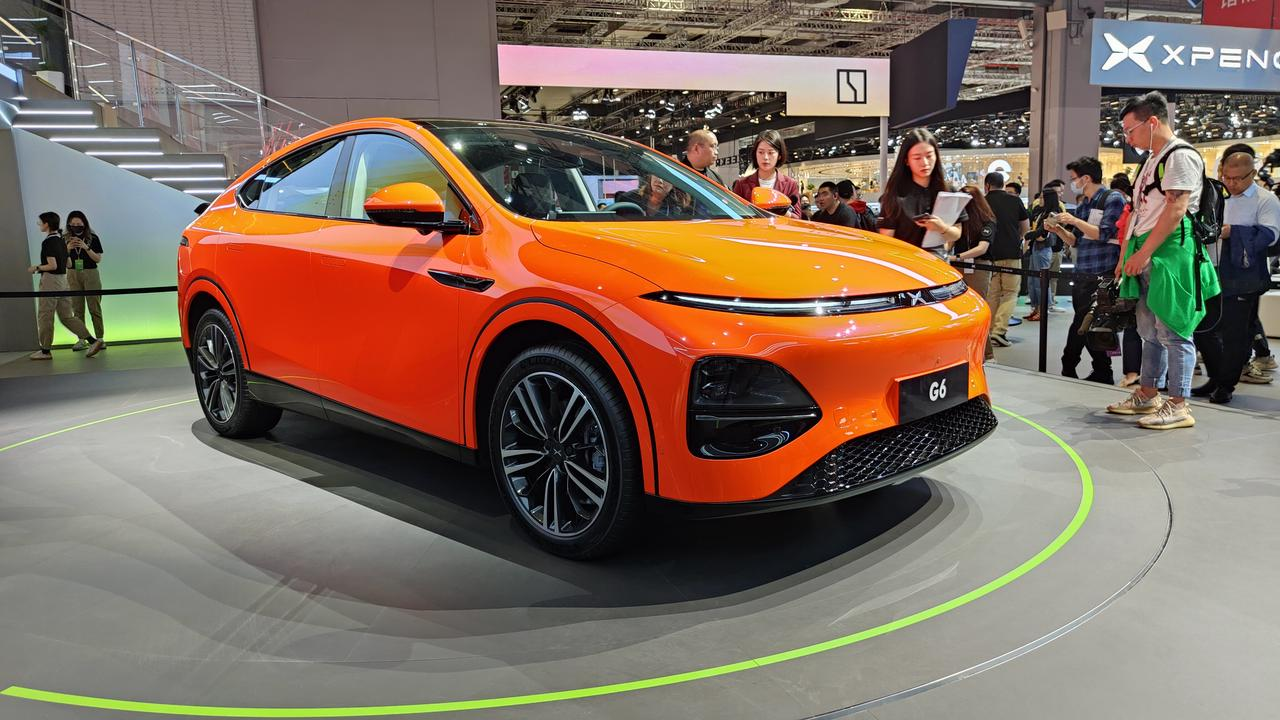
For Xiaopeng, if the sales of G6 are as good as expected, it will be able to collect more data of auxiliary driving, and thus continuously optimize and iterate its algorithm. For consumers, G6 may be the model with the strongest auxiliary driving ability in the same price range. This will enable more people to truly experience how much advanced auxiliary driving means to our daily travel.
Conclusion
As an owner of Xiaopeng P7, when I purchased the car 2 years ago, I did not choose to purchase the NGP function, because the NGP ability was not strong enough at that time. Although it could indeed free up quite a lot of manpower on the highway, the vehicle’s strategy was always very different from my own driving habits on the elevated roads that I used more often.
However, after driving for 1,800 km, I have become dependent on XNGP. Not only because it can provide me with an almost seamless driving experience on the highway, but also because it can give me peace of mind in straight city scenarios. Imagine sitting in the car after a day’s work, turning on XNGP, and arriving home without any operation, what a comfortable experience that is.
Therefore, I will very likely replace P7 with G6 now. XNGP function that is available upon delivery, full series 800V silicon carbide platform +5C battery pack. All of these are features that can truly improve my driving experience.
Xiaopeng’s accumulation in AD technology is now paying off.
This article is a translation by ChatGPT of a Chinese report from 42HOW. If you have any questions about it, please email bd@42how.com.
